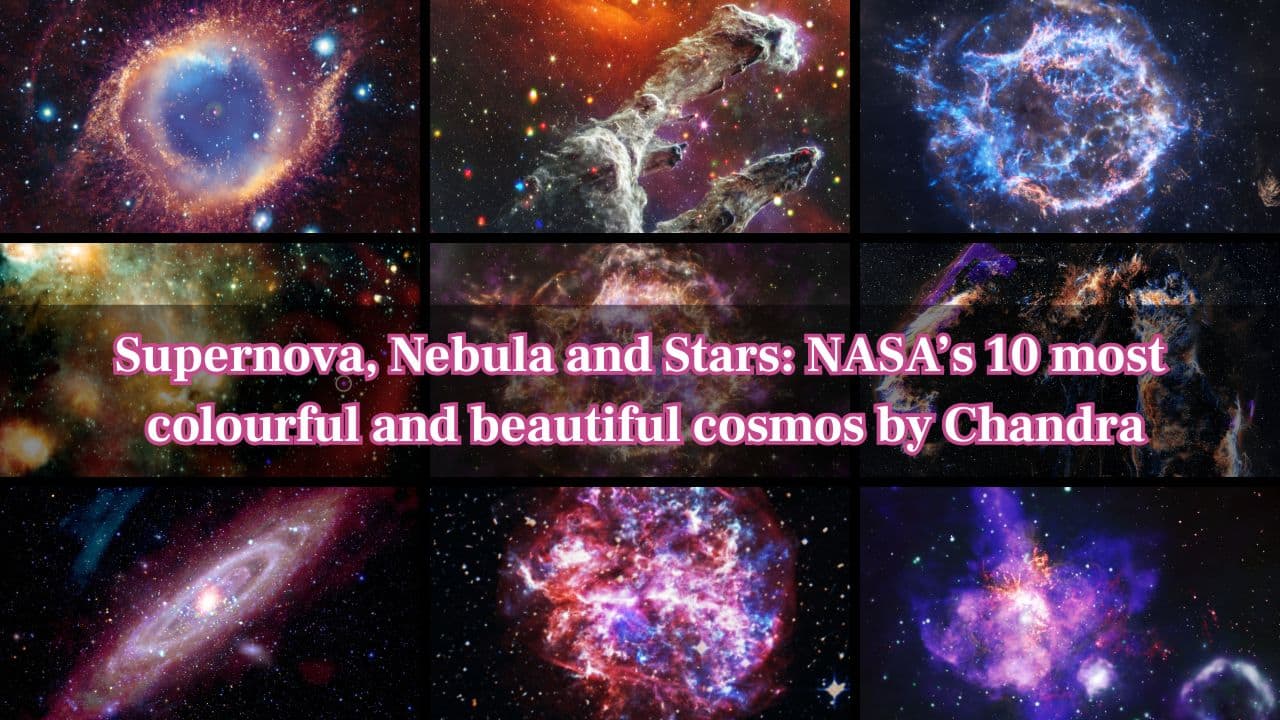
From explosive supernovas to glowing nebulas, NASA’s Chandra X-ray Observatory captures the cosmos in brilliant hues. Here are 10 of the most colourful and breathtaking celestial images ever recorded.
Helix Nebula: The Helix Nebula shows a dying star’s beauty, with data from Chandra, Hubble, GALEX, and VISTA revealing a glowing cloud around a dense white dwarf core.(Image: NASA)
Cassiopeia A: Cassiopeia A is the remnant of a star that exploded, leaving behind a cloud of expanding stellar debris. (Image: NASA)
Eagle Nebula: The Pillars of Creation, seen in X-rays by Chandra and infrared by Webb, reveal young stars forming—one even embedded within a dense pillar. (Image: NASA)
Andromeda: Astronomers used multiwavelength data to study Andromeda (M31), revealing insights into its structure and evolution—offering clues about our own Milky Way galaxy. (Image: NASA)
Cassiopeia A: Cassiopeia A, a supernova remnant, has been studied for over 2 million seconds by Chandra, revealing X-ray and infrared details captured with Webb. (Image: NASA)
30 Doradus: Chandra's deepest X-ray image of 30 Doradus reveals thousands of stars, supernova remnants, and stellar winds in one of the brightest, most crowded nearby star-forming regions. (Image: NASA)
Supernova Remnant G292.0+1.8: Supernova remnant G292.0+1.8 hosts a pulsar hurtling through space at over a million mph, formed from a collapsed massive star after a powerful explosion. (Image: NASA)
Cygnus OB2: In Cygnus OB2, Chandra and Spitzer data reveal young stars and disrupted planet-forming disks, offering the most detailed census of stars in this energetic star cluster. (Image: NASA)
Eccentric ‘Star’: ASKAP J1832 is a mysterious object showing 44-minute bursts of X-ray and radio signals, unlike anything seen before, offering fresh clues to its origin. (Image: NASA)
Cygnus Loop: Cygnus Loop is a supernova remnant where interstellar gas interacts with a powerful blast wave, creating a stunning display of heated material and cosmic shockwaves. (Image: NASA)
Discover the latest Business News, Sensex, and Nifty updates. Obtain Personal Finance insights, tax queries, and expert opinions on Moneycontrol or download the Moneycontrol App to stay updated!








